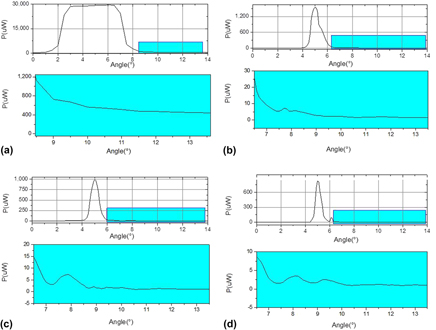Crossref Citations
This article has been cited by the following publications. This list is generated based on data provided by
Crossref.
Wang, Hongqiang
He, Xinru
Zhou, Bin
Shen, Jun
and
Du, Ai
2018.
Hot electrons coupling-enhanced photocatalysis of super black carbon aerogels/titanium oxide composite.
MRS Communications,
Vol. 8,
Issue. 2,
p.
521.
Du, Ai
Wang, Hongqiang
Zhou, Bin
Zhang, Chen
Wu, Xueling
Ge, Yingting
Niu, Tingting
Ji, Xiujie
Zhang, Ting
Zhang, Zhihua
Wu, Guangming
and
Shen, Jun
2018.
Multifunctional Silica Nanotube Aerogels Inspired by Polar Bear Hair for Light Management and Thermal Insulation.
Chemistry of Materials,
Vol. 30,
Issue. 19,
p.
6849.
Ge, Yingting
Zhang, Ting
Zhou, Bin
Wang, Hongqiang
Zhang, Zhihua
Shen, Jun
and
Du, Ai
2018.
Nanostructured resorcinol-formaldehyde ink for 3D direct writing.
Journal of Materials Research,
Vol. 33,
Issue. 14,
p.
2052.
Wang, Hongqiang
Du, Ai
Ji, Xiujie
Zhang, Chen
Zhou, Bin
Zhang, Zhihua
and
Shen, Jun
2019.
Enhanced Photothermal Conversion by Hot-Electron Effect in Ultrablack Carbon Aerogel for Solar Steam Generation.
ACS Applied Materials & Interfaces,
Vol. 11,
Issue. 45,
p.
42057.
Wang, Hongqiang
Zhang, Chen
Zhou, Bin
Zhang, Zhihua
Shen, Jun
and
Du, Ai
2019.
Ultra-black carbon@silica core-shell aerogels with controllable electrical conductivities.
Advanced Composites and Hybrid Materials,
Vol. 2,
Issue. 4,
p.
743.
Ji, Xiujie
Wang, Hongqiang
Chen, Tianze
Zhang, Ting
Chu, Junjun
and
Du, Ai
2020.
Intrinsic negative TCR of superblack carbon aerogel films and their ultrabroad band response from UV to microwave.
Carbon,
Vol. 161,
Issue. ,
p.
590.
Wang, Hongqiang
Lu, Zechun
Ma, Shangyang
Li, Zehua
Xin, Zhenhua
Zhang, Zhihua
Zhou, Bin
Shen, Jun
Qin, Lili
and
Du, Ai
2022.
Ultrablack Poly(vinyl alcohol)‐Graphite Composite Xerogel with Vertically Arranged Pores for Highly Efficient Solar Steam Generation and Desalination.
Advanced Energy and Sustainability Research,
Vol. 3,
Issue. 4,
Xi, Shaobo
Wang, Lingling
Xie, Huaqing
and
Yu, Wei
2022.
Solar-thermal energy conversion and storage of super black carbon reinforced melamine foam aerogel for shape-stable phase change composites.
International Journal of Hydrogen Energy,
Vol. 47,
Issue. 23,
p.
12024.
Özbakır, Yaprak
Jonáš, Alexandr
Kiraz, Alper
and
Erkey, Can
2023.
Springer Handbook of Aerogels.
p.
1431.
Du, Ai
and
Wu, Chengbin
2024.
Aerogels for Energy Saving and Storage.
p.
1.
Li, Guangyong
Wang, Leyi
Ji, Xiaofei
and
Zhang, Xuetong
2024.
Suspending Light‐Absorbing Nanoparticles in Silica Aerogel Enables Numerous Superblacks.
Advanced Materials,




